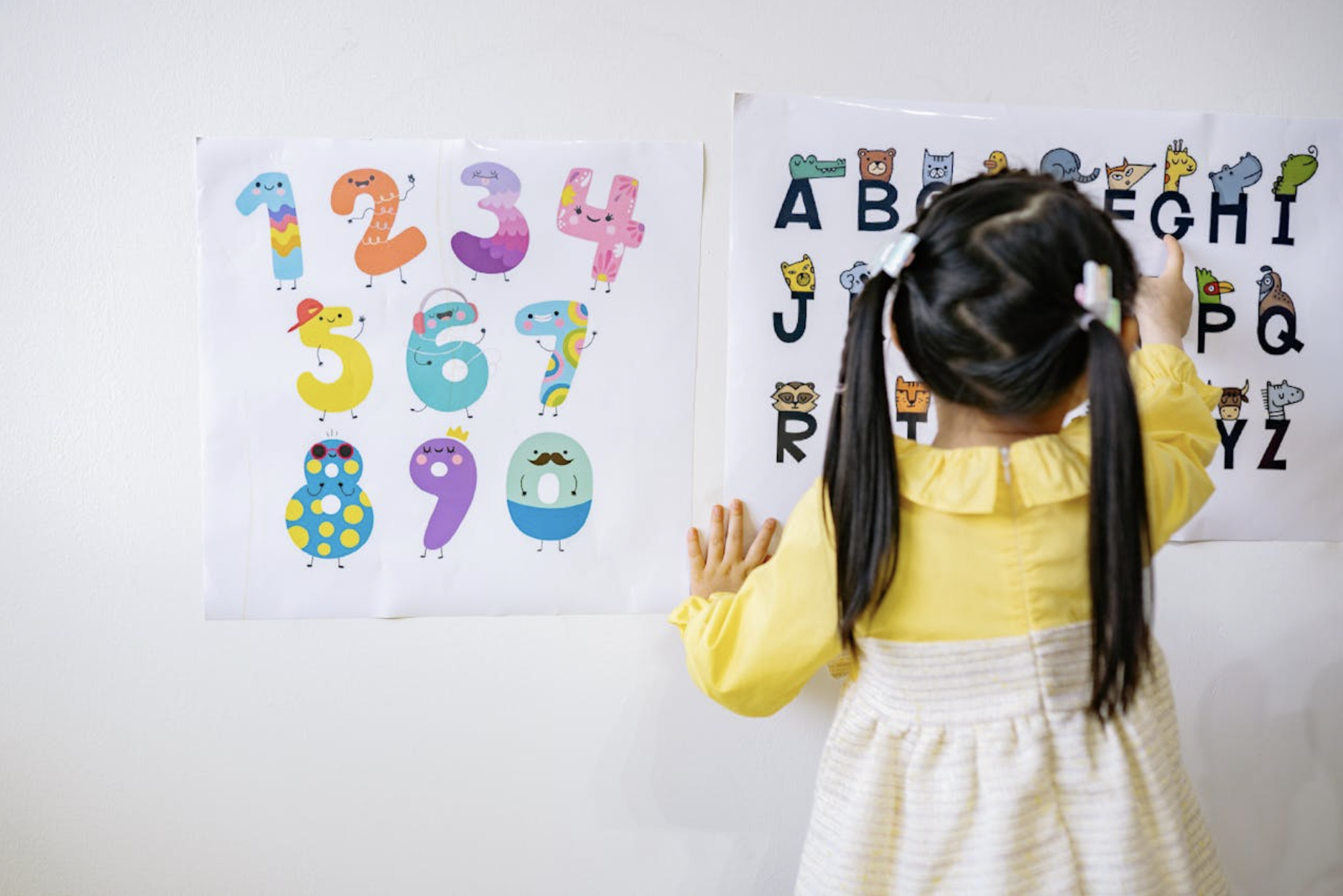Do you want your toddler to love math and develop genius-level thinking skills from an early age? With the right methods, it’s absolutely possible and fun! In this article, we’ll show you 7 easy, effective, and playful techniques to help your toddler become a little math genius at home.
Toddler math genius is the foundation of mathematical brilliance begins far earlier than most parents realize, with toddlers possessing extraordinary capacity for numerical understanding when exposed to innovative teaching methods. Revolutionary approaches to number and counting education can transform ordinary toddlers into mathematical prodigies, creating neural pathways that support advanced mathematical thinking throughout their academic careers.
Start implementing these toddler math genius methods today and watch your child’s mathematical abilities soar beyond expectations!
The Neuroscience of Early Toddler Math Genius

Recent breakthroughs in developmental neuroscience reveal that toddlers’ brains are uniquely wired for mathematical learning between ages 18 months and 4 years. During this critical period, the brain’s numerical processing centers develop at unprecedented rates, creating windows of opportunity that, when properly leveraged, can establish extraordinary mathematical abilities.
Research demonstrates that toddlers who receive systematic numerical training during this developmental window show measurably different brain architecture compared to their peers. Neural imaging studies reveal increased connectivity between mathematical processing regions, enhanced working memory capacity, and superior pattern recognition abilities that persist throughout childhood and adolescence.
The key lies in understanding that mathematical genius isn’t born it’s systematically developed through specific teaching methodologies that align with natural brain development patterns. Expert educators have identified precise techniques that maximize this neuroplasticity to create exceptional mathematical thinkers.
Read more: Amazing Number and Counting Methods That Make Toddler Math GeniusDevelopmental Neuroscience Research – Empowering Early Childhood Development
Early Childhood Cognitive Development – Revolutionary Color and Shape Recognition Techniques That Boost Baby Intelligence
The Concrete to Abstract Number Bridge Method
Professional mathematical educators have developed groundbreaking approaches that guide toddlers from concrete object manipulation to abstract numerical thinking through carefully structured progressions. This methodology recognizes that mathematical genius emerges when children can seamlessly transition between physical and conceptual number understanding.
The technique begins with “Number Story Creation,” where toddlers manipulate physical objects while narrating mathematical scenarios. For example, a child might arrange three toy cars while saying, “Three cars are driving to the park.” This approach simultaneously develops numerical recognition, mathematical vocabulary, and abstract thinking skills.
Advanced practitioners incorporate “Mathematical Theater” where toddlers act out numerical concepts using their entire bodies. Children might represent the number five by organizing themselves into groups, jumping five times, or creating five different poses. This kinesthetic approach creates robust neural connections that support advanced mathematical reasoning.
Read more: Amazing Number and Counting Methods That Make Toddler Math GeniusCreating Stimulating Learning Environments – Incredible Alphabet Teaching Secrets That Transform Babies Into Early Readers
Early Mathematical Development Guidelines – National Association for the Education of Young Children
The Quantum Counting Revolution
Innovative educators have revolutionized traditional counting methods by introducing “Quantum Counting” techniques that teach toddlers to perceive numbers as flexible, interconnected systems rather than rigid sequences. This approach develops mathematical intuition that supports advanced problem-solving abilities.
Instead of simple rote counting, toddlers learn to see numbers as “families” with specific relationships. The number six isn’t just “the number after five,” but rather “two groups of three,” “one less than seven,” and “half of twelve.” This multidimensional understanding creates mathematical flexibility that characterizes genuine mathematical talent.
Expert practitioners use “Number Transformation Games” where toddlers discover how numbers can be broken apart and recombined in infinite ways. A group of eight blocks might become four pairs, two groups of four, or one group of five plus three. These activities develop algebraic thinking skills years before formal education begins.
The Pattern Recognition Acceleration System

Mathematical genius fundamentally depends on superior pattern recognition abilities, and revolutionary teaching methods focus on developing these skills through systematic exposure to increasingly complex numerical patterns. This approach recognizes that mathematical talent emerges when children can instantly recognize and predict numerical relationships.
The “Musical Mathematics Method” combines rhythm and numbers to create powerful pattern recognition skills. Toddlers math genius is learn to count using specific musical beats, with different numbers corresponding to unique rhythmic patterns. This multisensory approach creates memorable neural associations that accelerate numerical fluency.
Advanced techniques include “Visual Pattern Pyramids” where toddlers arrange objects in increasingly complex geometric patterns while counting. These activities simultaneously develop spatial reasoning, numerical sequence understanding, and visual-mathematical integration skills that support advanced mathematical thinking.
The Conceptual Number Story Framework
Exceptional mathematical educators understand that numerical genius emerges when children develop rich conceptual understanding rather than mechanical counting abilities. The Conceptual Number Story Framework transforms abstract numbers into meaningful narratives that toddlers can understand and manipulate.
Each number receives a unique “personality” and backstory that helps toddlers remember its properties and relationships. The number four might be “the square friend who likes to make even groups,” while seven becomes “the lucky number who can’t be divided evenly.” These anthropomorphic approaches make abstract mathematical concepts concrete and memorable.
Professional implementations include “Number Adventure Books” where toddlers create stories featuring different numbers as characters. These narratives naturally incorporate mathematical operations, relationships, and problem solving scenarios while maintaining high engagement levels that sustain learning motivation.
The MultiSensory Calculation Playground
Revolutionary approaches recognize that mathematical genius develops most effectively when all sensory systems are engaged simultaneously. Multisensory calculation methods create rich learning experiences that accelerate numerical understanding through diverse neural pathways.
The “Texture Counting Method” associates different numbers with specific tactile experiences. Toddler math genius might count smooth stones for even numbers and rough bark pieces for odd numbers. This approach creates memorable sensory associations that support rapid numerical recognition and recall.
Advanced practitioners implement “Scented Mathematics” where different numbers are associated with distinct aromas during counting activities. These olfactory connections create powerful memory triggers that enhance numerical fluency and make mathematical learning deeply enjoyable for toddlers.
The Spatial-Numerical Integration Technique
Toddler math genius consistently demonstrate superior spatial reasoning abilities, and innovative teaching methods specifically develop these skills through spatial-numerical integration activities. These techniques recognize the fundamental connection between mathematical and spatial thinking.
“Number Mapping Adventures” involve toddlers creating physical maps where different locations represent specific numbers. Children might walk three steps to reach “Number Three Island” or climb four stairs to visit “Number Four Castle.” This approach develops spatial numerical associations that support advanced geometric and algebraic thinking.
Expert implementations include “Mathematical Architecture” where toddlers build structures representing different numbers. A “Number Five Tower” might require five blocks arranged in a specific pattern, while a “Number Eight Bridge” needs eight connecting pieces. These activities integrate mathematical learning with creative expression and spatial problem-solving.
The Comparative Quantity Mastery System
The toddler math genius requires sophisticated understanding of quantity relationships, and revolutionary teaching methods focus on developing these skills through systematic comparative analysis. This approach moves beyond simple counting to develop genuine numerical intelligence.
The “Quantity Detective Method” involves toddlers investigating and comparing different groups of objects to determine mathematical relationships. Children might discover that “this group has two more than that group” or “these collections have the same amount.” This analytical approach develops mathematical reasoning skills that support advanced problem-solving.
Advanced techniques include “Number Balance Games” where toddlers use simple balance scales to explore numerical equality and inequality. These hands-on activities develop intuitive understanding of mathematical relationships that forms the foundation for algebraic thinking.
The Mathematical Memory Palace Technique: Counting Revolution
Exceptional mathematical educators adapt ancient memory techniques for toddler learning, creating “Mathematical Memory Palaces” that help young children organize and recall numerical information with extraordinary accuracy. This approach leverages toddlers’ natural spatial memory abilities to support mathematical learning.
Children create imaginary houses where each room represents a different number, complete with specific decorations and activities associated with that number. The “Number Three Room” might contain three stuffed animals having a tea party, while the “Number Seven Room” features seven colorful balloons floating near the ceiling.
Professional implementations include guided visualization exercises where toddlers mentally “visit” different number rooms while solving mathematical problems. This technique creates robust memory networks that support rapid calculation and numerical reasoning abilities.
Read more: Amazing Number and Counting Methods That Make Toddler Math GeniusEarly Education Development Milestones – Powerful Educational Methods Nannies Use to Teach Babies to Walk Confidently
Mathematical Learning Research – American Academy of Pediatrics
Technology Enhanced Mathematical Genius Development
Modern approaches carefully integrate appropriate technology tools that enhance traditional mathematical learning without replacing hands-on experiences. These digital supplements provide precise mathematical presentations and interactive experiences that accelerate learning.
Revolutionary mathematical apps adapt to individual toddlers’ learning pace and preferences, providing personalized challenges that maintain optimal difficulty levels. These tools can present numbers with perfect consistency while tracking progress and identifying areas needing additional focus.
However, experts emphasize that technology should supplement rather than replace human mediated mathematical experiences. The most effective approaches combine digital precision with personal interaction, creating comprehensive learning environments that maximize both technological advantages and human connection.

Measuring Mathematical Genius Development
Advanced educators use sophisticated assessment techniques to measure the development of mathematical genius in toddlers. These evaluations examine improvements in numerical fluency, pattern recognition speed, problem-solving creativity, and mathematical reasoning abilities.
Professional assessments reveal that toddlers who receive systematic mathematical training demonstrate measurably superior performance in numerical tasks, enhanced spatial reasoning abilities, and increased confidence in mathematical situations. These advantages persist throughout formal education and contribute to long term academic success.
Longitudinal studies confirm that early mathematical intervention creates lasting cognitive benefits that extend beyond numerical skills to enhance overall logical thinking, analytical reasoning, and creative problem solving abilities throughout childhood and adolescence.

How early can a toddler become a math genius?
Toddlers can begin developing math genius capabilities as early as 18 months through structured counting methods and number recognition activities.
What are the signs of a toddler math genius?
Signs include advanced pattern recognition, rapid number sequencing, and intuitive understanding of mathematical relationships beyond their age group.
How long does it take to see math genius results?
Most toddlers show significant improvement in mathematical abilities within 3-6 months of consistent application of these genius building methods.

